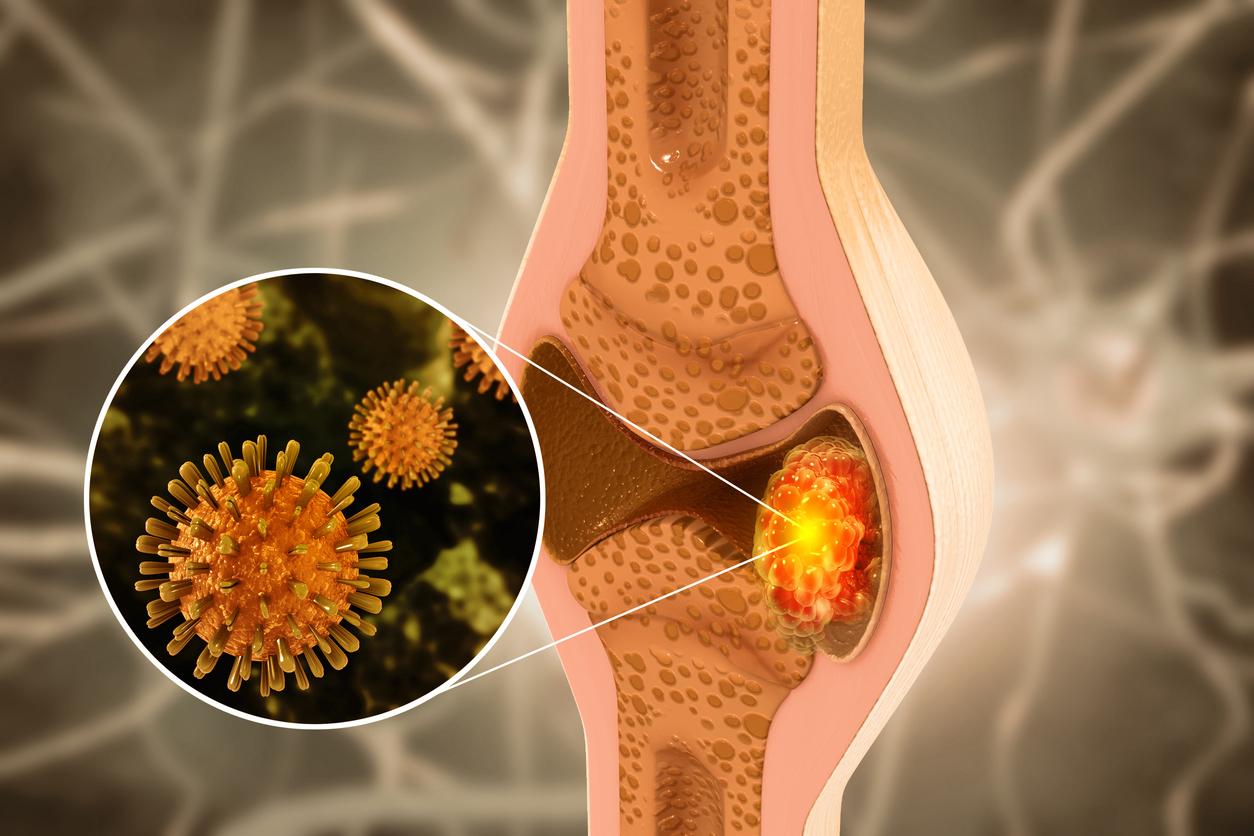- Torticollis, what is it?
- What is the cause of torticollis?
- Who is affected by torticollis?
- What to do ? How to relieve torticollis?
- How long does a torticollis last?
- When to consult?
- What to do if the torticollis does not pass?
- How to avoid torticollis?
Torticollis, what is it?
Jumping out of bed, turning his head to look at his alarm clock, we hear a little noise in the neck. A sharp pain settles in a few minutes and becomes more and more acute… Ouch, it’s a torticollis! Don’t worry, even if it can impress, the torticollis is not dangerous !
Torticollis is a benign and very common condition. It results in the occurrence of a contracture of one or more muscles of the neck (sterno-cleido-mastoid muscle, trapezius muscle). The pain is sharp, accompanied by significant discomfort in the movements of the neck and an abnormal attitude of the head and neck in flexion and rotation.
The symptoms of torticollis are generally localized to the level of the largest muscle of the neck: the sterno-cleido-mastoid. But the pain can sometimes radiate to the back and shoulders. In some rare cases, torticollis can be felt up to the hands and fingers.
What is the cause of torticollis?
Torticollis usually occurs after a sudden movement of the neck, a ligament or vertebral problem or bad sleeping position. In short, it should be remembered that in most cases, neck pain is caused by muscle contracture due to poor sitting or lying posture.
Cervical pain can also come from a osteoarthritis and be favored by stress and muscle tension. There is therefore no direct link between torticollis and stress, the latter being more of an aggravating factor than a cause.
The torticollis peut also – it is rarer – to provide for following an infection (influenza-like state, infection of the teeth, the throat…).
Even more rarely, some people have chronic torticollis that tends to get worse over time. This is’so-called spasmodic torticollis. Its causes are poorly understood. According to the Vida encyclopedia, “these would be disorders whose origin lies in a malfunction of certain regions of the brain, or chronic irritation of the nerve which controls the contracted muscles”.
Most of the time, it appears in the morning upon waking.
Who is affected by torticollis?
Anyone can be affected by torticollis. People who had a road accident are sometimes more prone to torticollis than others. Women are also more affected by torticollis than men, as are people aged 30 to 60.
To know: torticollis can affect the infant! the congenital torticollis in babies may be due to the positioning of the infant in the mother’s womb or to a delivery with suction cups, for example. It is reversible and benign.

Torticollis
How to cure a torticollis quickly?
To relieve torticollis several remedies exist:
- The best of treatments to overcome a torticollis is rest.
- For ease the painyou can also apply a relaxing ointment locally or take pain medication (paracetamol, anti-inflammatory).
- The application of warm compresses (hot water bottlescarf, etc.) relaxes the muscles of the neck.
- Similarly, a good bath relaxes the muscles and helps reduce pain.
- If the pain is severe, wearing a cervical collarperhaps recommended (in pharmacies).
Can we move the neck? As soon as things get better, immobility is worse than anything! “You have to work your muscles regularly to tone them and stimulate the spine, improve your mobility and promote the repair process,” insists Dr. Jean-Yves Maigne, rheumatologist. Swimming pool, gymnastics, yoga, physiotherapy. All this contributes to limiting the impact of pain on everyday life.
If you are wondering if it is better to favor hot or cold for torticollis, know that the heat is effective in relaxing muscles. To be used in all its forms: in a bath, with a hair dryer, a hot water bottle, etc.
How long does a torticollis last?
Thanks to the simple treatments mentioned above, torticollis usually disappears spontaneously in a few days. Normally, the pain should therefore not last for too long. However, the pain may persist longer. You may then need medication to provide relief and to make the pain go away more quickly.
When to consult for torticollis?
If you suffer from torticollis, and especially recurrent torticollis, start by making an appointment with your doctor (teleconsultation is sufficient and saves you having to travel). Curing a torticollis in 10 seconds is not possible. Thus, if necessary, this one will propose you to vsee a physiotherapista osteopath or a chiropractor. These professionals often make it possible to regain the mobility of the head more quickly.
Between sessions, wearing a cervical collar for torticollis will often be advised. But be careful, for a short period (one week) because prolonged immobility atrophies the muscles.

Torticollis
When to worry about a torticollis?
In some cases, the torticollis can hide another condition: inflammatory, neurological, tumoral or infectious disease… When the torticollis does not disappear, or if it comes back repeatedly, it is therefore necessary to do a more complete medical check-up . Do not hesitate to make an appointment with your doctor, especially if your torticollis is accompanied by fever. He may suggest that you perform an X-ray (sometimes an MRI, or even a blood test) in order to understand the origin of your torticollis and take the necessary measures.
How to avoid torticollis?
If you are particularly prone to torticollis, certain reflexes can help you avoid it:
- Cover your neck in case of cold with a scarf,
- adopt an ergonomic working position to avoid having a “broken” neck (desk and chair at the right height),
- stretch your back and neck regularly during the day,
- adjust the height of the headrest in the car,
- opt for one comfortable pillow even ergonomic,
- watch television facing the device and not to the side
- avoid holding your mobile phone between your shoulder and your ear (use earphones).
These good reflexes should allow you to prevent the occurrence of torticollis.
How to sleep with torticollis? To sleep, it is better to choose a pillow that you can “shape” according to your morphology and which keeps your head in line, whether you are on your side or on your back. And avoid the position on the stomach which forces you to twist your neck.

















